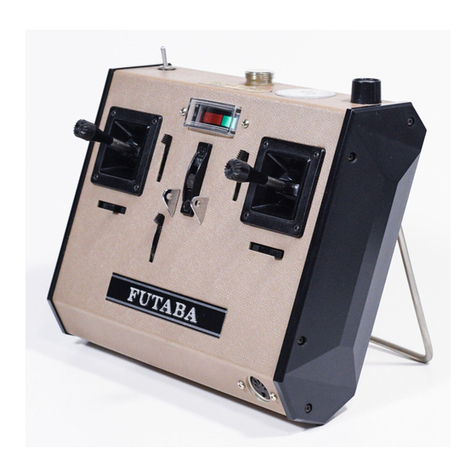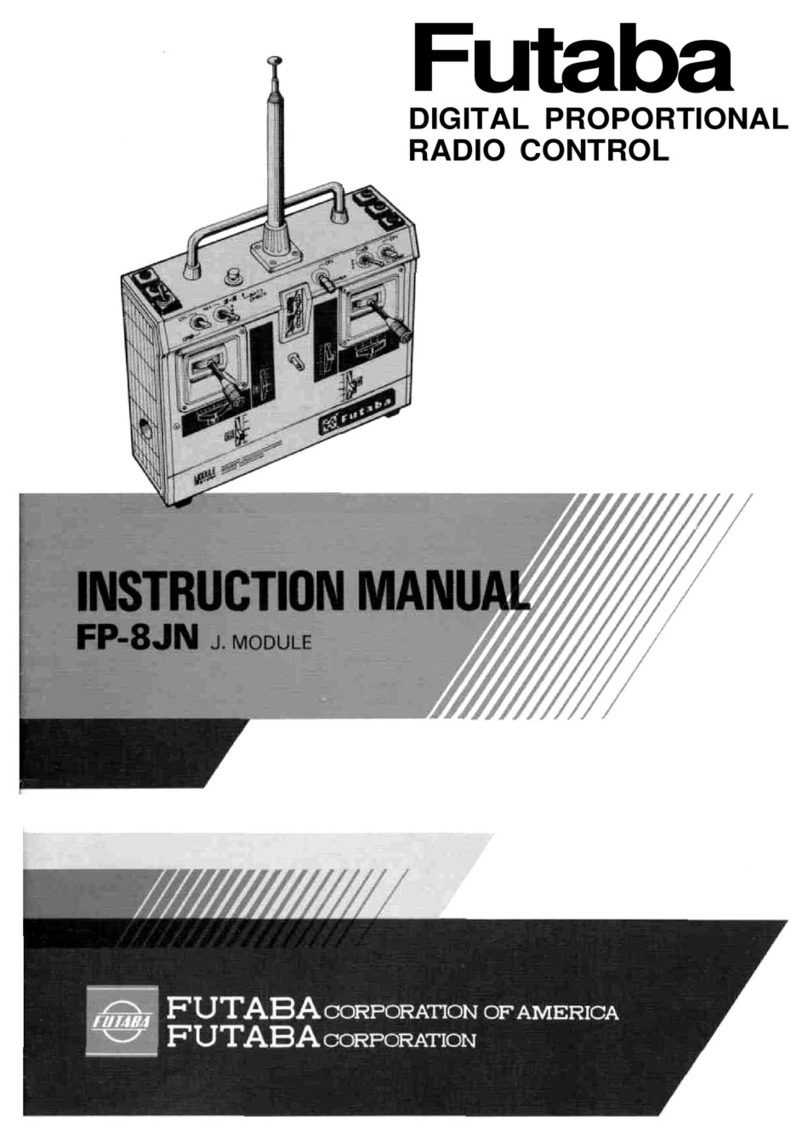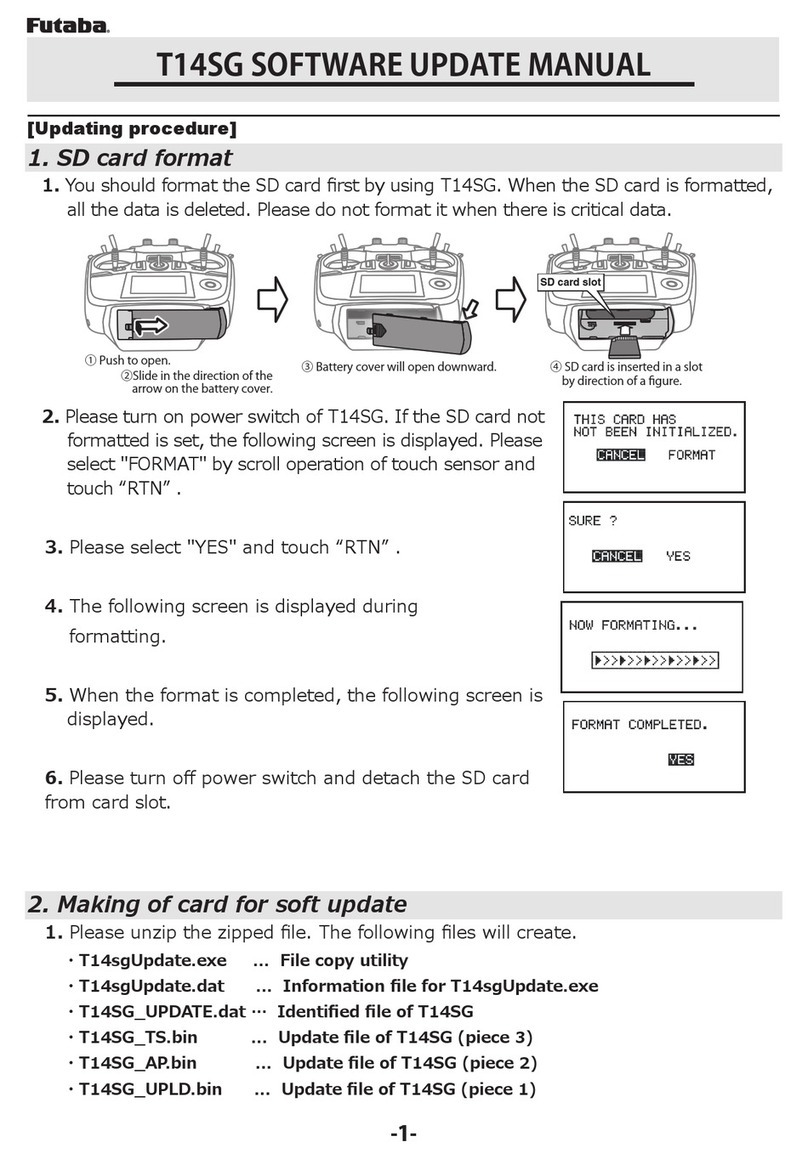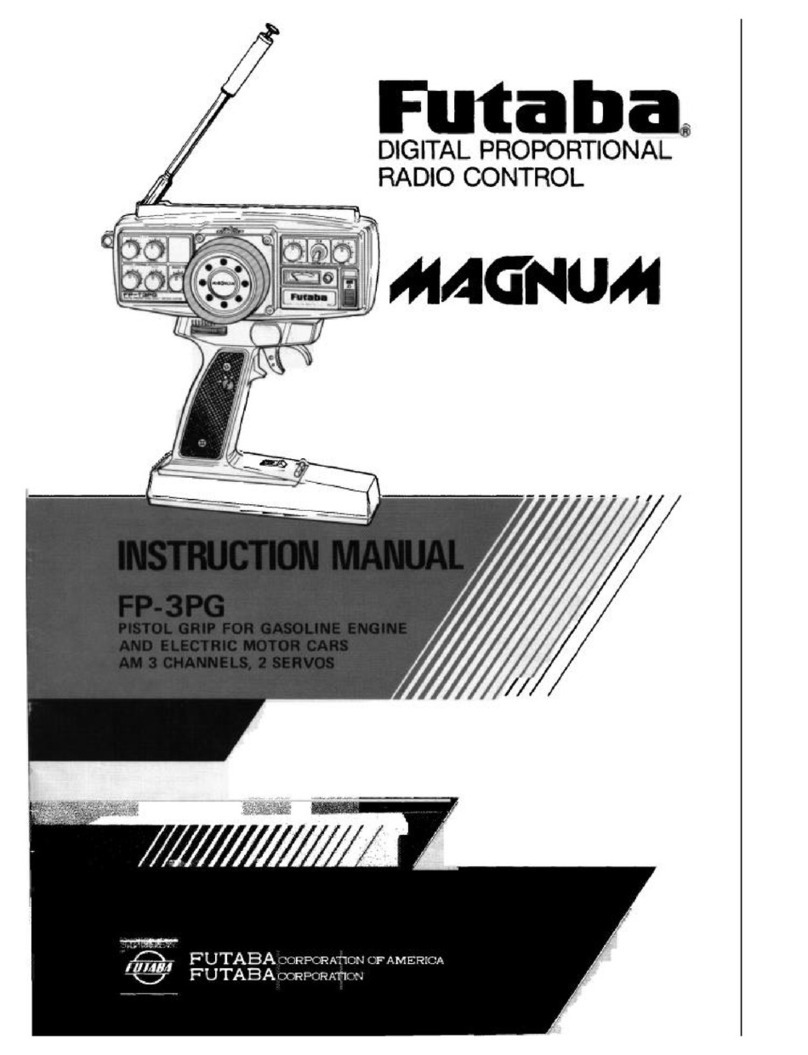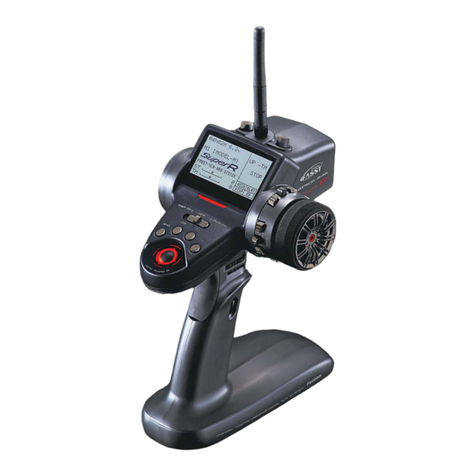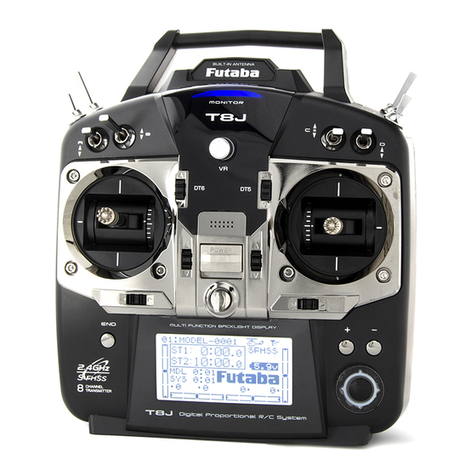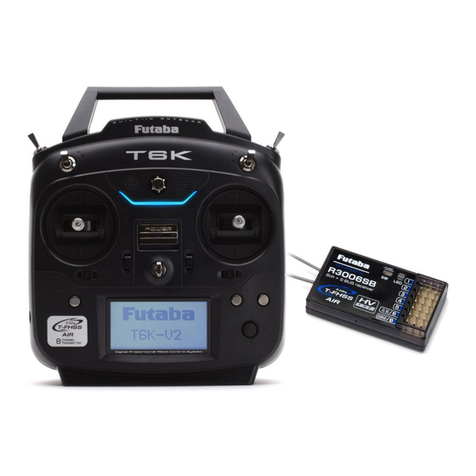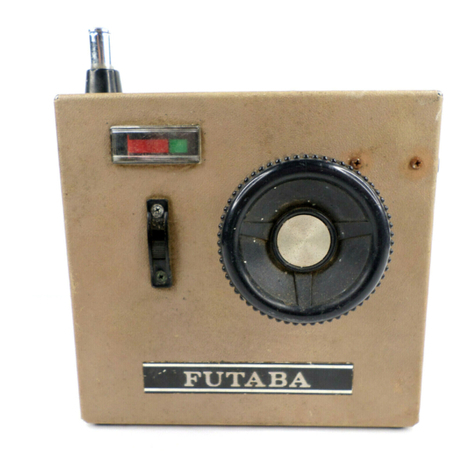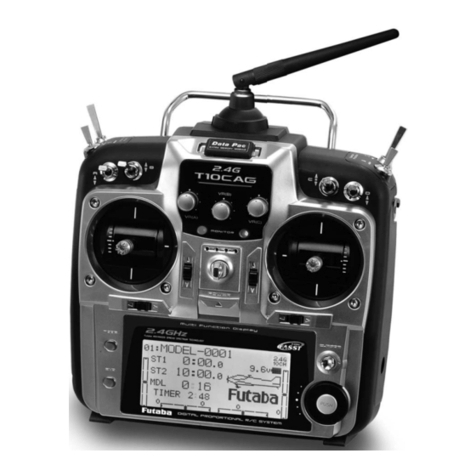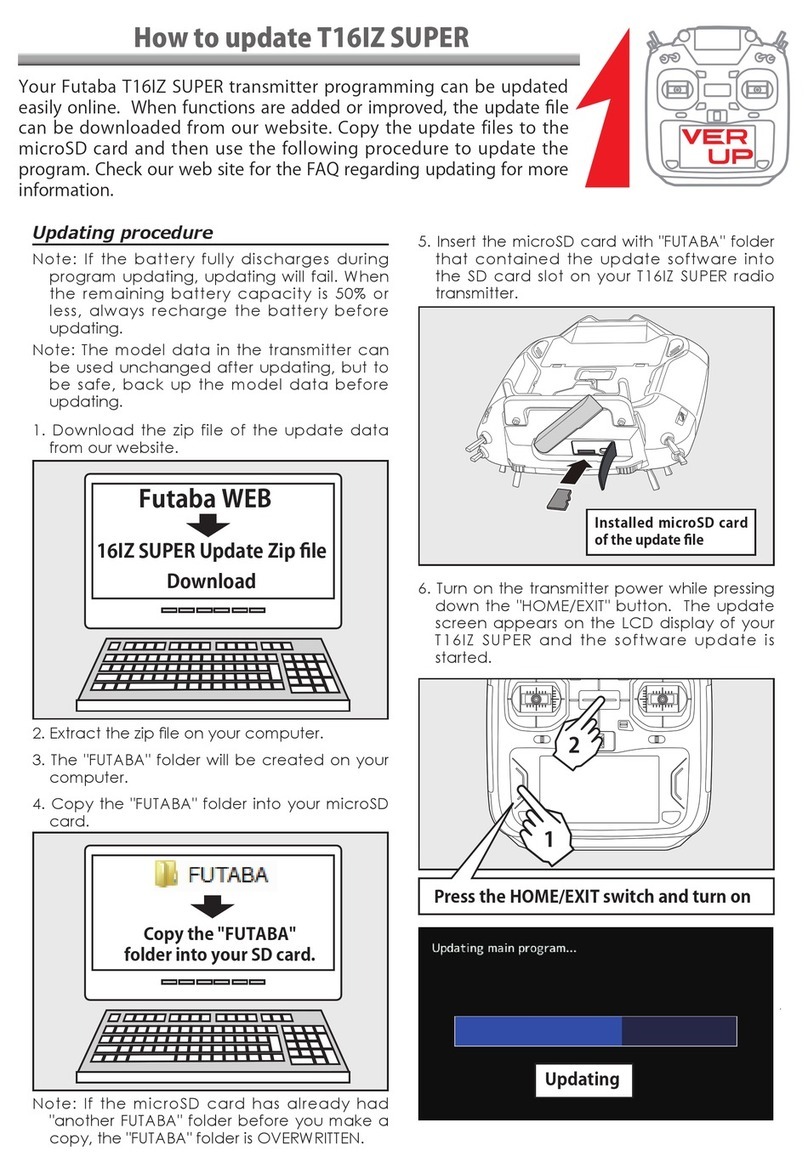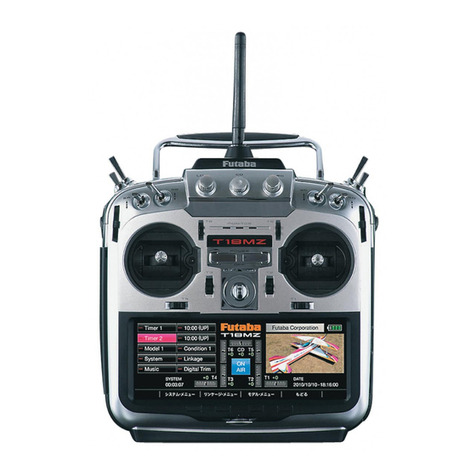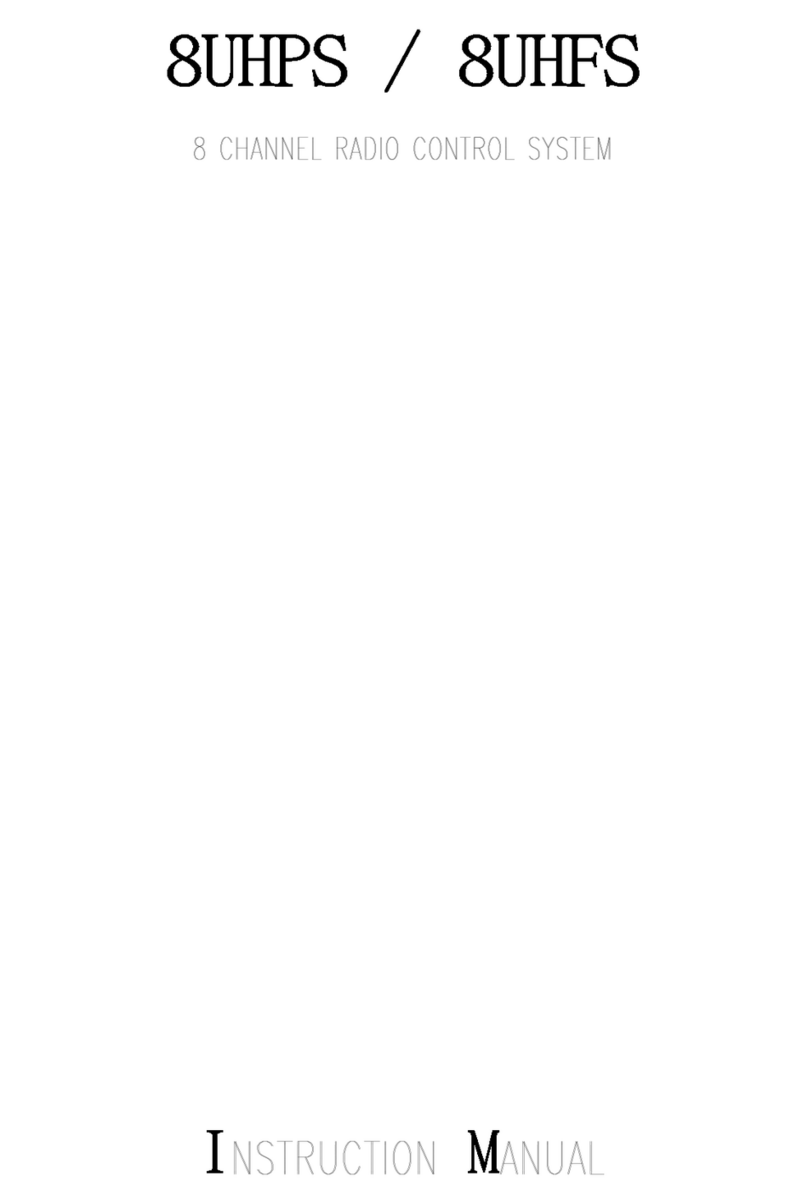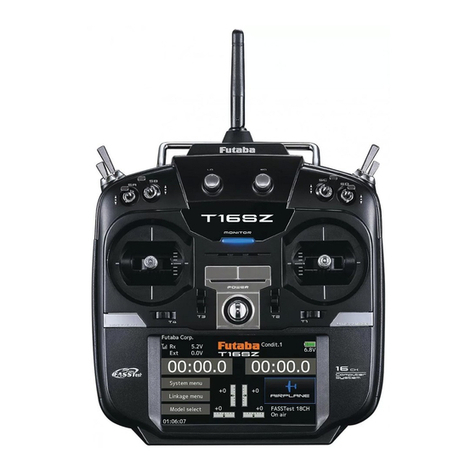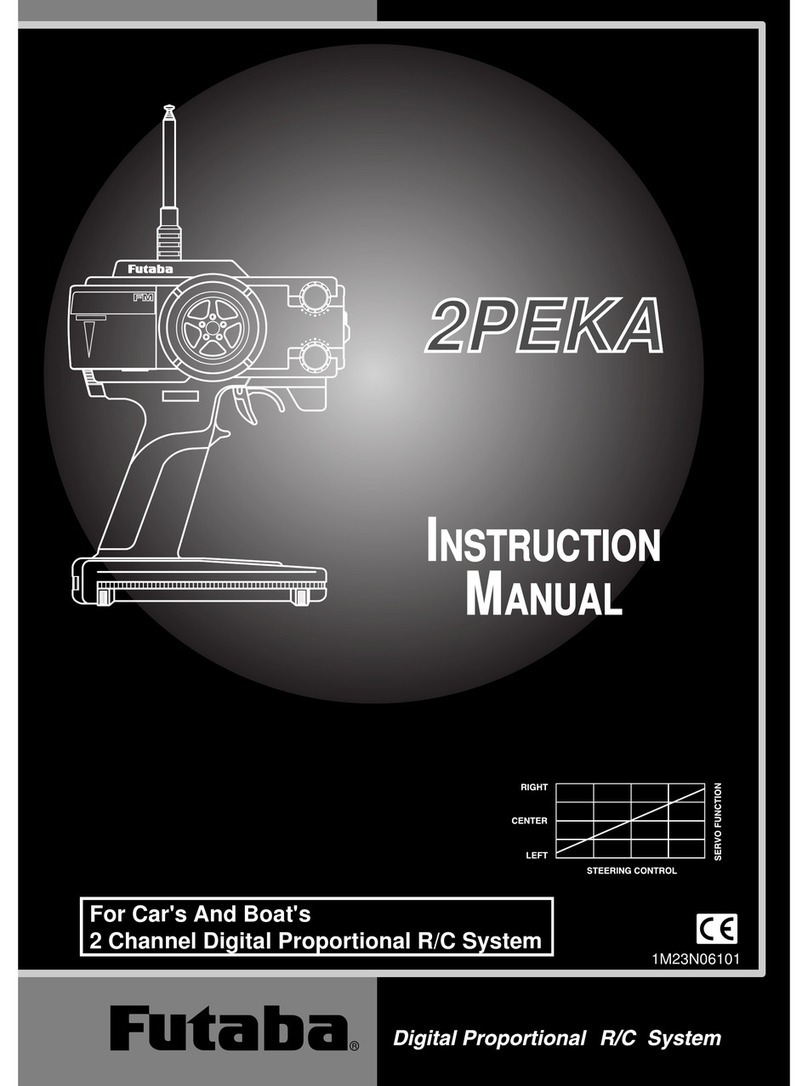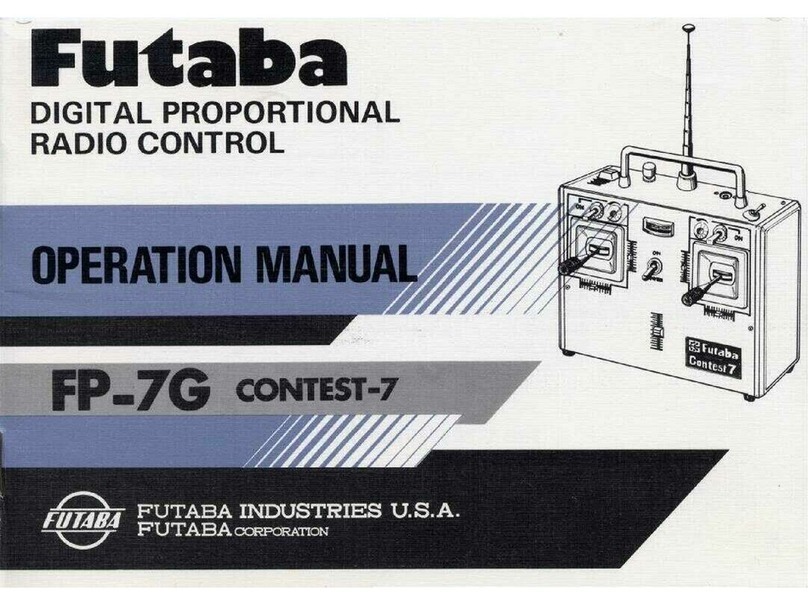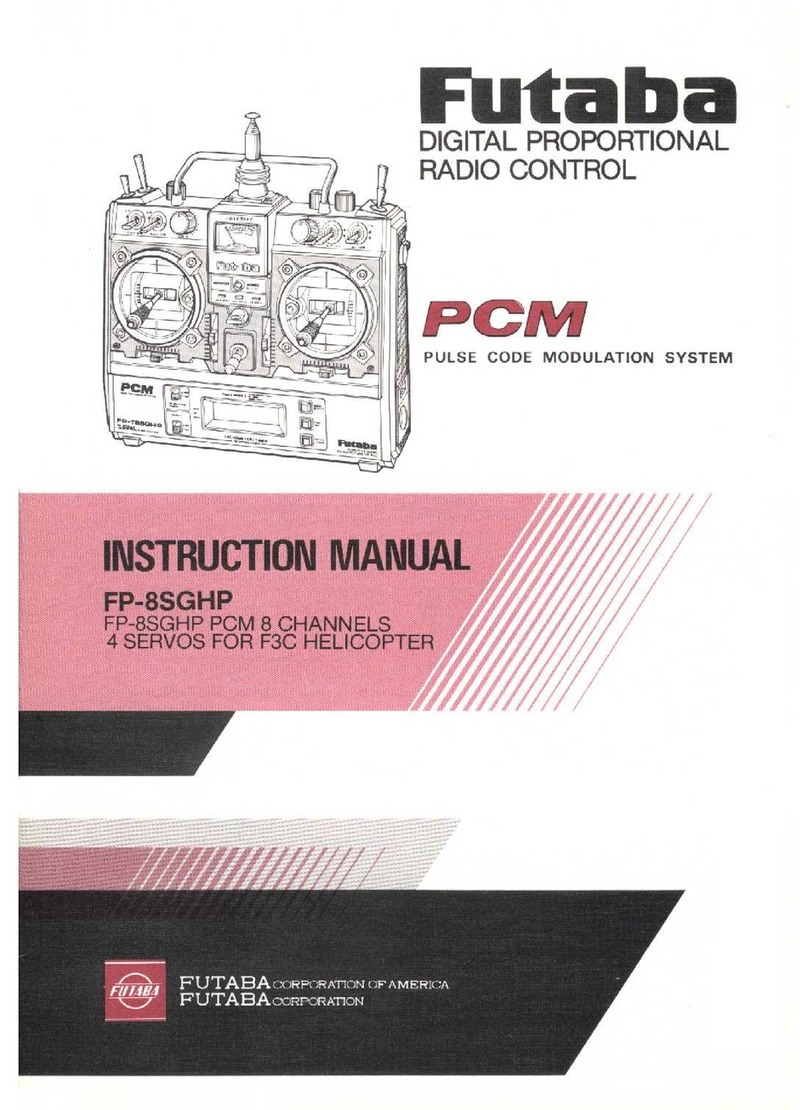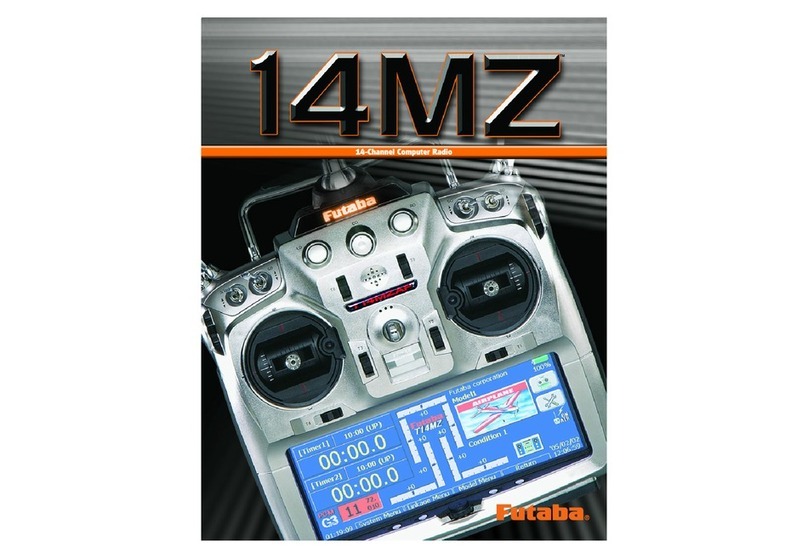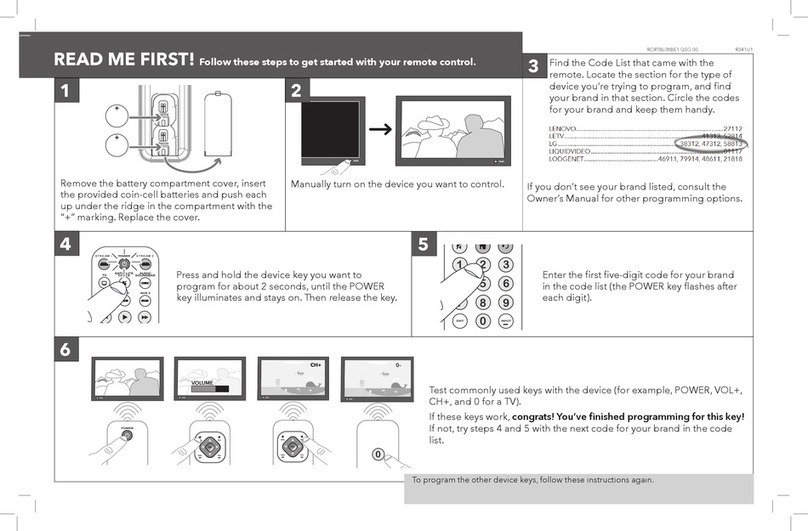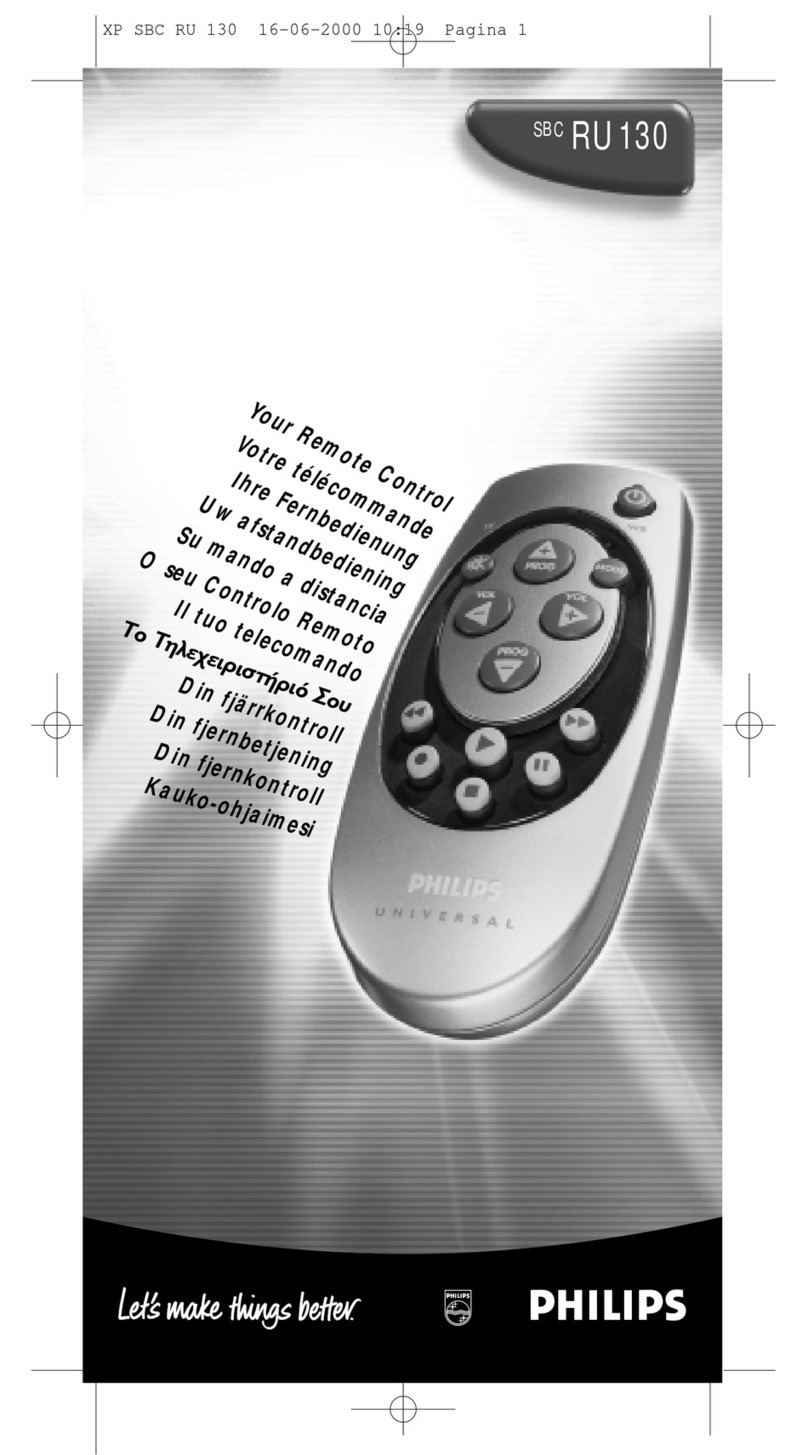•Even though the receiver antenna is long,donotcut or
bundle it.
•Installthe servossecurely. Tighten the mounting screws
until
the
rubber
grommet
is
crushedslightly.
If
the
screws
are
too
tight,
the
cushioningeffect
will
be
adversely
affect-
ed.
•The crystalcan be changed fromthe outsideof the receiver
case.Alwaysuse theFutaba transmitter/receivermatched
crystalsetto change the band.
•Spare servohornsare supplied. Use them as needed.
•Wrapthe receiverinsponge rubber. Waterproofand dust-
proofthe receiverby placingit ina plasticbag and wrapping
arubber band around the open end of the bag. Do thesame
with
the
receiver/servo
battery.
•Use the rubber bands wrapped around the receiver to hold
the servoand switchleads.
•Aftermounting is complete,recheckeach part,then check
the range by makingthe transmitterantennaas shortas
possible,extendingthe receiverantennafully,and operating
the set froma distanceof20m to 30m. The movementof
each servoshouldfollowthe movement of each stickof the
transmitter.
•Aftermounting and checking are complete, takeyour model
to the shop whereyou purchased the set,or to an experienc-
ed radio controlmodeler,and askthem to teach youhow to
handle yourradiocontrolset in theproper manner and to
inspectyourset-upcarefully.
•To
enjoyradio
control
models
fully,
besure
to
observe
all
safety standards.
AILERONAND ELEVATOR DUAL (dual rate ON,
OFF) ADJUSTMENT (6NLKonly)
When the dual switchis setto ON, theservothrowismade
smallerby theamount shown by the hatched linesinFig. 10.
The servo throw can be set from40% to 100%of the total
travelby adjustingthe trimmernextto the switchwitha flat
bladed screwdriver.When the dual rateswitchis setto OFF,
the throwisnormal.Whendesiringa largerthrow,such asfor
spins, etc.,set the dual rate switchto OFFand adjustthe
throw mechanicallybyhorn androd adjustment. Set the
dual rateswitchto on forlevelflight and adjust the trimmer
fortherequiredamountof throw.
When thedualrateswitchisset to OFF, dualrate is set and
the throwbecomes large.
This horn permitsshiftingofthe
servoneutralpositionat theservo
horn.Settingand shiftingthe
neutralposition
a) Angle divisions
b) Effect
Fig.
12
Fig.
13
1)The splined horn has 25 seg-
ments. The amount ofchange per
segment is;360:25=14.4°
2)The minimum adjustableangle
isdeterminedbythe number of
arms or number oftheholes.For
fourarms, the minimum adjustable
angle is:
To shiftthe holescenterline to
theright(clockwise)relativeto
baselineA,shiftarm2 tothepo-
sitionof arm1 and setit tothe
positionclosesttobaselineA.
(Example]For a fourarmhorn,
the angularshiftper segment is
14.4° . Theshifttotherightis90°
-
(14.4
x6)
=
3.6°
To shiftby thesame angleinthe
opposite direction,use theoppo-
sitearm number.
Fig.
14
Arm3 shift4.8° tothe right, arm
6shifts2.4° totheleft,andarm 4
shifts7.2° totherightand left.
For a sixarmhorn,turnthearm
counterclockwiseand set arm2
to thepositionof arm 1 . The ad-
justableangleis 60° - (14.4 x 4)
=2.4°.
Fig.
15
The following splined horns are optional.
Fig.
16
HORN A HORNB HORNC HORND HORNE HORN P
Theflagcan beattachedto,andremoved
from,theend of the transmitter antenna
withone touch.
USING THE ANTENNA FREQUENCY FLAG
Insertthefrequencyflaginto
the flagholder as shown here.
Fig.17
